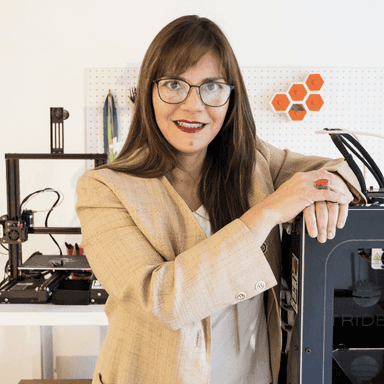3D printing, or additive production, radically transformed the way they design and manufacture products in various sectors.
Although technology has been used for more than a decade, its mass knowledge and adoption reached its altid point during the COVID-19 pandemic, when essential devices were quickly created to combat the disease. In those days we could observe how many makers from their homes shared masks to health personnel, and, of course, the most professional printed more complex aids such as hisopos for COVID testing, and instrumental pieces for intubation of patients, since the way to manufacture these products at least took 3 months.
The versatility of 3D printing became patent, and its usefulness in crisis situations became undeniable, marking one before and one after in its recognition and applications.
Overcoming the most intense time of pandemic, additive manufacturing continued its evolution according to previous trends. Research and development focused on advanced materials and large-format 3D printing devices, successfully applying in various industries where technology stands out for its ability to shorten production times, reduce costs by eliminating the need for molds and allowing seamless customization based on digital drawings to be tailored.
The year 2023 witnessed significant advances, such as the incorporation of more resistant and efficient materials. However, not only the industrial materials have advanced; progress has also been made in sustainability through the use of recycled materials, for example the
3D printing of pellets (plastic pellets used as raw material) have oversaw for the manufacture of parts in large format.
The large-scale 3D printing ceased to be a promise to become a reality. Thanks to the improvement of the speed and accuracy of the printing systems, it is now possible to manufacture large-sized components efficiently, opening the door to mass production of structural parts and industrial-scale prototypes.
Hybrid technologies were proposed by some leading companies, such as 3D Systems or Massivit, who published use cases that show the benefits of 3D printed molds as a way to reduce time and costs to users. This was translated into the production of parts for final use, including critical safety components in sectors as demanding as aerospace or the tanker.
In the medical field, 3D printing experienced remarkable advances, allowing personalized medicine and generating innovations in fields such as bioprinting and prosthesis creation.
The integration of artificial intelligence with 3D printing has reached new levels, optimizing design processes, reducing print times and improving the quality of the final products. In addition, artificial intelligence has shown a crucial role in detecting and correcting errors during the printing process, increasing efficiency and reducing waste.
The augmented reality and virtual reality were integrated to improve product visualization and simulation prior to its manufacture. In addition, the combination of 3D printing with nanotechnology generated remarkable advances in the creation of molecular scale structures with revolutionary applications in medicine and electronics.
Looking at the future, the year 2024 is expected to expand in the variety of materials available. Integration with other technologies such as robotics and Internet of things (IoT), among others, opening possibilities for large-scale automated and custom manufacturing. Globally as theThe industrial market continues its process of consolidation and expansion of production, accessibility and speed continue to be key elements in the evolution of 3D printing. Personalization and sustainability also became essential, highlighting the importance of 3D printing in the transforming revolution that defines the future of production.
And in harmony with the rest of the world, in Argentina, several actors have contributed to the development of 3D printing during the last decade. From the manufacture of plastic filaments (FDM printer material) to the production of 3D printers and the supply of high quality professional services, the country demonstrated its commitment to this innovative technology. In the last year, the 3D printers manufactured in Argentina evolved, incorporating artificial intelligence to optimize prints, save material and avoid errors.
In addition, printers are developing that use recyclable materials, not only for the creation of prototypes, but also for the manufacture of furniture. In the Argentine medical sector, companies have highlighted the manufacture of 3D bioprinters, used both in research and in the creation of biological material and the production of personalized medicines.
What is expected about 3D printing for the year 2024, both in Argentina and the rest of the world?
In our country, the adoption of technology continues to grow, covering industries and the medical sector. In addition, emerging enterprises have found creative applications for 3D printing, such as creating custom models for orthopedics, inducing accessories, and even marketing specialized tools for relaxation and ceramics.
Although worldwide, 2023 showed a certain stagnation in the additive industry, expectations for the future are optimistic and point to continuous growth.
In conclusion, the future direction of 3D printing is clearly outlined: a constant approach is expected in more efficient and high-provisioned materials, higher printing speed, widening print size, deeper integration with artificial intelligence and virtual reality, and increasing emphasis on sustainability, marked by the use of recycled materials.
The manufacturing industry together with other technologies continues its rise to a central position in the transforming revolution, defining the future of production.
In a globalized context, Argentina is not behind, with local actors who demonstrate their commitment to innovation and excellence in the application of this technology.


Comments